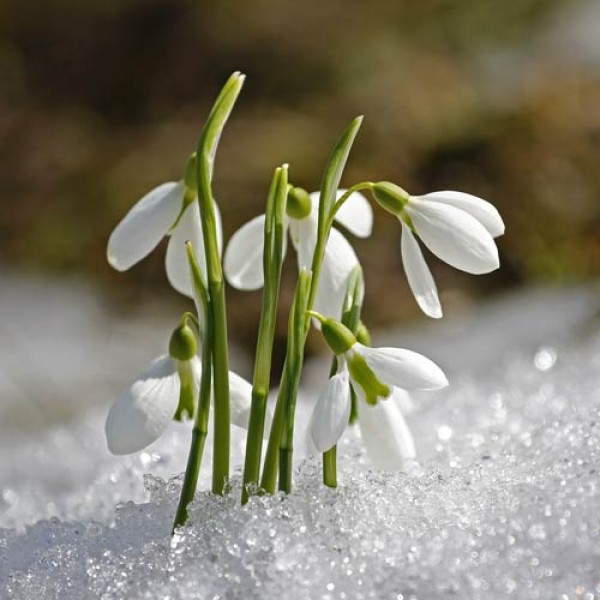
Gardening in February
The first mild days or even weeks may already appear in the warmer regions, and if you feel the same way as we do, then you are probably longing to finally start gardening again. Nevertheless, winter is not yet over and you should bear this in mind when planting the first robust vegetables.
The most important thing is still cleaning up and preparing the beds. You can rake mulch and rotten leaves from the beds, the soil can be thoroughly loosened and a fresh layer of compost or other organic fertiliser added.
For the first plantings, a cold frame or foil houses make sense. If you fill them with a 30 - 40 cm thick layer of horse dung under a 20 cm thick layer of humus, they will be heating themselves, if you keep them well closed. Early salads, rocket, cress and kohl rabi can be sown in the cold frames.
In mild regions, you can even dare to sow the first seeds outdoors, for which rocket, early carrots, parsnips, radishes and spinach are suitable. When sowing, make sure that the plants will have enough room to grow later. If you want to have some early bloomers, you are well advised to grow the pretty Viola cornuta, which is also quite cold-tolerant!
Finally, from the end of February, you can start growing all the delicious nightshade plants on the windowsill: tomatoes, peppers and aubergines. The Central European summer is too short for these, so pre-cultivation is important to ensure that the plants are large enough when they are moved outdoors and can bring in a rich harvest in summer.
February is the last time for pruning. In fruit trees, sick and damaged areas are cut off extensively. Branches that grow steeply upwards are also pruned, as they bring little fruit. Only if you want to encourage strong new shoots, cut back very heavily. But this should not be done every year. For currants, very old branches should be cut off close to the ground. You can recognize them by their flaking bark. The biennial shoots with fruit buds will bring this year`s yield. Leave about six of the young, unbranched shoots that are not yet yielding. In the case of raspberries, old, worn and weak, young branches are cut off close to the ground.
The pruning should be finished by the end of February at the latest, because then the sap will rise back into the branches. A white coating of the trunks made of loam, lime and horsetail extract protects fruit trees from extreme temperature changes and the associated cracking of the bark.
Perennial shrubs and herbs should also be cut back now at the latest to make room for new shoots.
Now the whole garden will also benefit from fertilization as a starting aid for the next season. If you are uncertain whether the nutrient content of the garden soil is sufficient or too low, you can also have a soil sample tested at a soil testing institute for the content of phosphorus, potassium, magnesium, lime and pH value. Nitrogenous fertilisers such as horn meal cause strong growth, phosphorus-rich fertilisers promote flower and fruit formation. Potassium is contained in potassium magnesia and wood ash and ensures that plants are stable against heat, cold and drought. By raising the pH value in the soil, lime makes nutrients available to the plants and has a positive effect on the soil structure. Especially sage, lavender and baby`s breath are grateful for lime.








